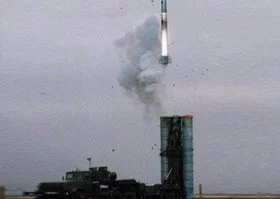Missile vertical launch transient overload acceleration test
Project name: Missile vertical launch transient overload acceleration test
Brief introduction:Missile systems are subjected to some of the most extreme mechanical forces experienced in any engineering field—particularly during vertical launch, where rapid acceleration and transient overloads put immense stress on even the most robust aerospace components. To guarantee reliability, safety, and precise performance throughout the missile’s operation, it is essential to conduct comprehensive real-world dynamic testing that accurately replicates launch conditions. This thorough testing helps identify potential weaknesses and ensures the system can withstand the demanding environments encountered during deployment.
A Chinese Aerospace Institute partnered with Dynatronic to carry out a critical acceleration test on a new type of vertically launched missile. The objective was to measure and analyze the transient overload response during the critical initial seconds of launch—when the missile transitions from rest to full propulsion.
To achieve accurate and high-resolution data capture under these intense conditions, the team employed Dynatronic’s RE-846U Rugged Dynamic Test System. Engineered for use in harsh environments, the RE-846U offers:
High-speed, multi-channel data acquisition
Ruggedized build to withstand shock, vibration, and extreme temperatures
Real-time monitoring and storage of transient signals
Compatibility with various acceleration and pressure sensors
The test setup included multiple high-sensitivity accelerometers mounted at critical points within the missile structure. These sensors captured instantaneous G-force spikes, structural vibrations, and response curves during the vertical lift-off phase. The RE-846U system recorded these signals with high precision, even under violent dynamic conditions.
The test results delivered essential insights into the missile's transient mechanical behavior, including peak acceleration loads, damping characteristics, and structural response. This data is vital for verifying the missile’s design limits, improving launch system reliability, and guiding future design optimizations for aerospace components.
With the successful execution of this critical test, the project further reinforced the significant value of rugged dynamic testing in various defense applications and clearly highlighted Dynatronic’s essential role in supporting the advancement of next-generation aerospace technology.

